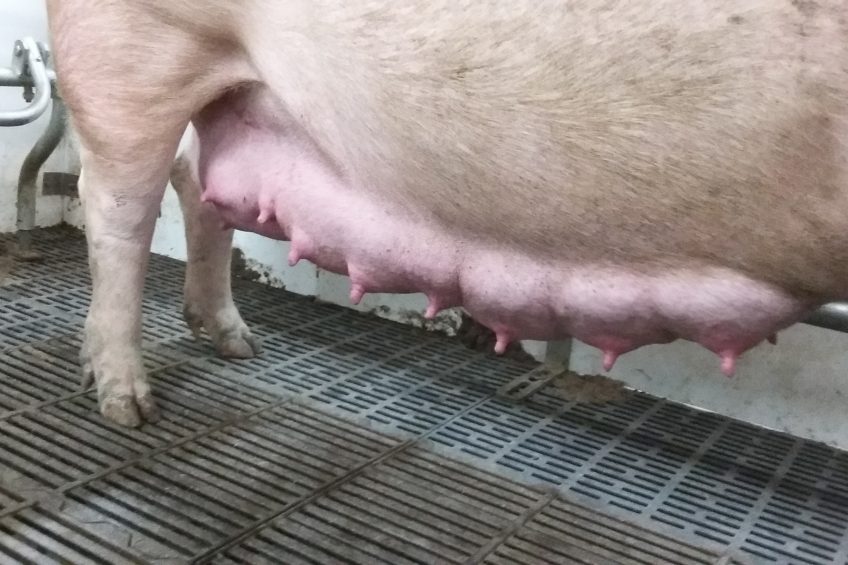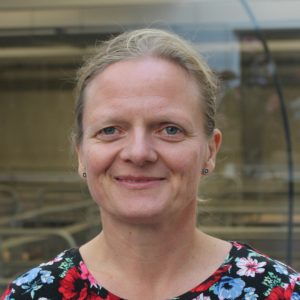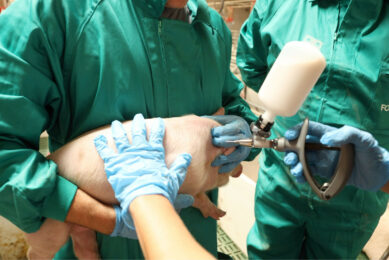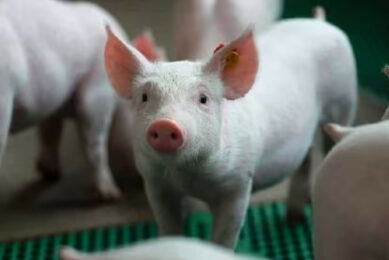How do we know the nursing capacity of sows?

Ideally, 90% of our sows should wean at least 15 piglets at each weaning – and do so again and again… They could do so without milkcups and the likes, writes expert Vivi Aarestrup Moustsen
By tradition and because it’s the easiest – the herdsmen look after the sows, and the sow looks after the piglets. It’s always been like that.
However, for some years now, Danish crossbred sows have given birth to more piglets than they have teats to nurse. As a result, farmers cross foster, use nurse sows and supplementary milk – and wish the sows had more teats.
Cross fostering alone doesn’t solve surplus piglets
Statistics for 2015 showed that the sows in average gave birth to 17.6 total born, of which 15.9 were live born, meaning cross fostering alone doesn’t solve the issue of surplus piglets, since the sows don’t have 16 teats on average.
However, if we can improve the nursing capacity of the sows, then we can reduce the need for nurse sows – which requires skilled labour input and means mixing of piglets from different litters. And we can reduce the need for supplementary milk, which is an add-on investment in the sow herds.
Supplementary milk in each farrowing pen
Within the last years, many Danish herds have invested in systems to provide supplementary milk automatically in each farrowing pen. Such systems don’t come for free and need maintenance and cleaning, etc. In addition, there is costs of milk powder, which also differs in value for the pigs and adds on to the complexity of looking after the farrowing unit. And adding extra teats to the sows by genetic improvement takes time…
So what do we in the meantime?
Knowing the nursing capacity of sows
How do we know the nursing capacity of our sows? We don’t – or least we don’t in Denmark. In a number of herds, the staff counts the number of teats of the individual sow when the sow enters the farrowing unit, and then at litter equalisation, the sows are given as many piglets as the sow has functional teats.
And because some piglets die and some piglets are not thriving satisfactorily – so they are likely to be moved to care sows together with other piglets that are not thriving – the sows end up weaning fewer piglets than they have teats. In addition, 20-40% of the sows are used in the nurse sow concept. For this we need pens, so it reduces the number of farrowing sows that we can have in each batch.
However, if we can make each sow nurse more of their own piglets successfully, we’re likely to improve farm economy.
Assessing potential capacity of crossbred sows
To assess the potential capacity of Danish crossbred sows, we visited 10 Danish production herds, and counted and scored teats of approximately 40 sows in each of the 10 herds. All sows had farrowed within the last 5-15 days of the visit. The number of teats on left and right side was counted, and the within row distances and between-row distances were measured.
The within-row distance was measured to assess if there was a piglet shoulder-width between 2 neighbouring teats and the between-row distances were measured to assess how high the top row would be, if the bottom row was accessible for the piglets. In addition, all glands and teats were scored. As an extra ‘benefit’, we measured the height, the length, the shoulder-width and the depth (from back to under the udder) on all sows. The sow dimensions were measured to see if the sows had grown and we should change recommendations for inventory or if they are similar size as last time we measured sows.
The sows had 14.5 teats – ranging from 11 to 18!
Characteristics of sows with many teats
One next step would be to see if there are characteristics of sows with many teats. Another is to discuss our counting and scoring of teats with experts in nutrient supply of the mammary glands in sows – are there and if yes, what are the links between the morphology of the glands and the potential milk production?
Can we ensure more teat functions for more sows for many subsequent lactation periods so at least 90% of our sows wean at least 15 piglets at each weaning? And do so again and again – without milk cups and the likes?











